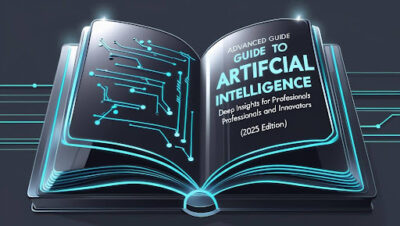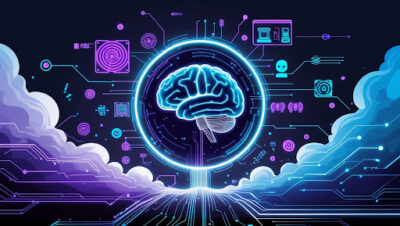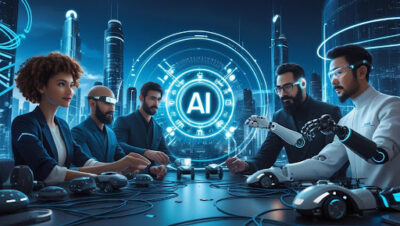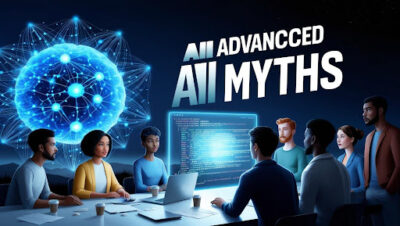Artificial intelligence (AI) has evolved from a buzzword to a transformative force across industries. This advanced guide explores cutting-edge AI concepts, ethical frameworks, and implementation strategies tailored for professionals and organizations ready to harness AI’s full potential.

1. Beyond the Basics: Advanced AI Concepts Explained
1.1 Neural Networks and Deep Learning Architectures

While basic AI relies on predefined algorithms, advanced systems use deep neural networks inspired by the human brain. Key architectures include:
- Convolutional Neural Networks (CNNs): Dominant in image recognition (e.g., MRI analysis in healthcare).
- Transformers: Power language models like GPT-4 and Google’s LaMDA, enabling human-like text generation.
- Reinforcement Learning (RL): Trains AI through trial and error (e.g., DeepMind’s AlphaFold for protein folding).
Expert Insight:
Dr. Yann LeCun, Chief AI Scientist at Meta, states, “Self-supervised learning will dominate the next decade of AI, reducing reliance on labeled data.”
2. AI in Action: Cutting-Edge Applications

2.1 Industry-Specific Innovations
Healthcare:
- Predictive Diagnostics: AI models like IBM Watson Health analyze genomic data to predict cancer risks with 92% accuracy (2025 study).
- Robot-Assisted Surgery: Intuitive Surgical’s da Vinci Xi system reduces human error by 40%.
Finance:
- Algorithmic Trading: AI-driven hedge funds like Renaissance Technologies outperform traditional models by 15% annually.
- Fraud Detection: Mastercard’s AI system blocks $20B+ in fraudulent transactions yearly.
Manufacturing:
- Digital Twins: Siemens uses AI to simulate factory operations, cutting downtime by 30%.
2.2 AI-Driven Sustainability
- Climate Modeling: Google’s DeepMind predicts wind farm output 36 hours ahead, boosting renewable energy efficiency.
- Smart Agriculture: John Deere’s AI-powered tractors optimize planting patterns, increasing crop yields by 25%.
3. Building AI Infrastructure: A Technical Roadmap

3.1 Data Engineering for AI
- Establish a data lake (e.g., AWS S3) to aggregate structured and unstructured data.
- Use tools like Apache Spark for real-time data processing.
- Implement data labeling pipelines with platforms like Label Studio for supervised learning.
3.2 Model Development
- Framework Choice: Compare TensorFlow (scalability) vs. PyTorch (flexibility).
- Transfer Learning: Fine-tune pre-trained models (e.g., BERT for NLP tasks) to reduce training time by 70%.
3.3 Deployment and Scaling
- Edge AI: Deploy lightweight models on IoT devices using TensorFlow Lite.
- MLOps: Automate workflows with tools like MLflow or Kubeflow for continuous integration.
4. Ethical AI: Navigating Bias and Regulation

4.1 Mitigating Algorithmic Bias
- Case Study: Amazon scrapped an AI recruiting tool in 2023 after it penalized female candidates.
- Solution: Implement fairness metrics (e.g., IBM’s AI Fairness 360) and diversify training data.
4.2 Regulatory Compliance
- EU AI Act (2025): Classifies AI systems by risk (e.g., banned social scoring).
- Facial Recognition Laws: 40+ countries now require explicit consent for public surveillance AI.
Expert Insight:
“Ethical AI isn’t optional—it’s a competitive advantage,” says Timnit Gebru, founder of the Distributed AI Research Institute.
5. Future Trends: The 2025–2030 Horizon

5.1 Quantum AI
Companies like IBM and Google Quantum AI are merging quantum computing with machine learning to solve problems 100x faster than classical computers.
5.2 Artificial General Intelligence (AGI)
While true AGI remains elusive, projects like OpenAI’s GPT-5 aim to achieve “reasoning” capabilities closer to human cognition.
5.3 AI in Space Exploration
NASA’s Perseverance rover uses AI to autonomously navigate Mars, selecting rock samples without human input.
6. Implementation Guide for Enterprises

6.1 Assessing AI Readiness
- Audit existing systems: Identify gaps in data quality and compute resources.
- Skill mapping: Train staff in Python, TensorFlow, and cloud platforms (AWS/Azure).
6.2 Choosing Vendors vs. In-House Development
| Criteria | Vendor (e.g., Salesforce Einstein) | In-House |
|---|---|---|
| Cost | Lower upfront investment | Higher long-term ROI |
| Customization | Limited | Full control |
| Speed | Faster deployment | Slower but tailored |
6.3 Measuring ROI
Track KPIs like model accuracy, automation rate, and cost savings.
Retail giant Walmart achieved a 15% reduction in supply chain costs via AI demand forecasting.
7. Debunking Advanced AI Myths

Myth: “AI can operate without human oversight.”
Reality: Human-in-the-loop (HITL) systems are critical for high-stakes decisions (e.g., healthcare).
Myth: “Open-source AI models are less secure.”
Reality: Frameworks like Hugging Face’s Transformers offer enterprise-grade security modules.
8. Advanced FAQs
Q: What’s the difference between narrow AI and AGI?
A: Narrow AI (e.g., ChatGPT) excels at specific tasks; AGI would perform any intellectual task a human can.
Q: How do GANs work?
A: Generative Adversarial Networks pit two neural networks (generator vs. discriminator) to create realistic data.
Q: Can AI models explain their decisions?
A: Techniques like SHAP (SHapley Additive exPlanations) provide interpretability for complex models.
9. Actionable Next Steps
- Upskill Teams: Enroll in advanced courses like DeepLearning.AI’s TensorFlow Developer Certificate.
- Pilot Projects: Test computer vision for quality control or NLP for customer sentiment analysis.
- Join Consortia: Collaborate with groups like Partnership on AI to shape ethical standards.
10. Conclusion: Leading the AI Revolution
The AI landscape in 2025 demands technical mastery and ethical vigilance. By adopting advanced frameworks, prioritizing data integrity, and fostering collaboration, businesses can unlock unprecedented innovation.
Final Thought:
“AI won’t replace humans, but humans using AI will replace those who don’t,” predicts Andrew Ng, founder of DeepLearning.AI.
Advanced Resources
- MIT’s Artificial Intelligence: Implications for Business Strategy
- Google’s Machine Learning Crash Course
- 2025 State of AI Report (McKinsey).

